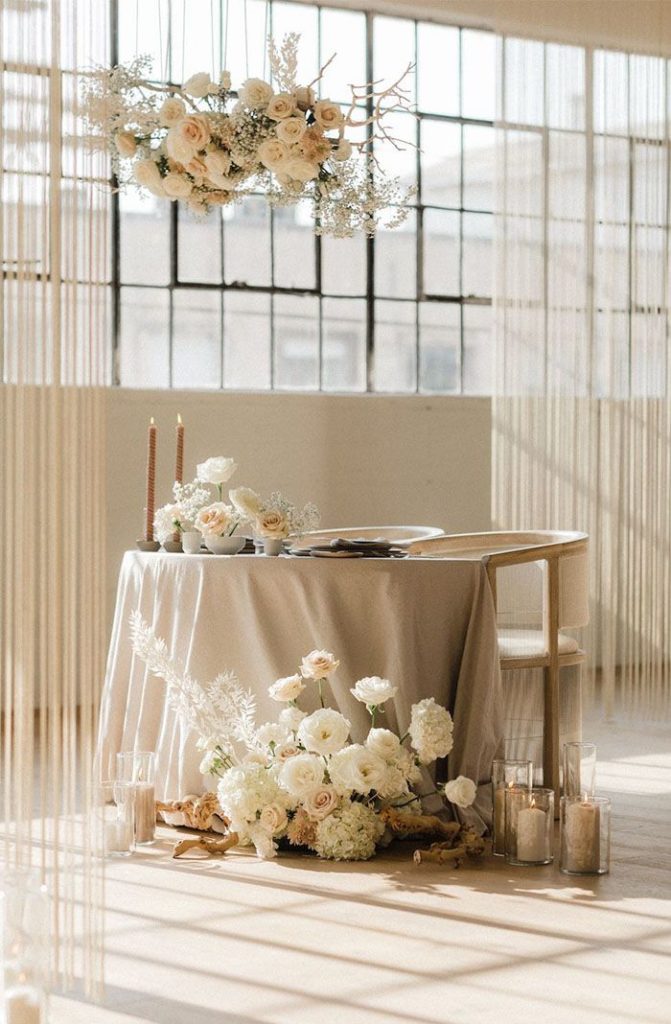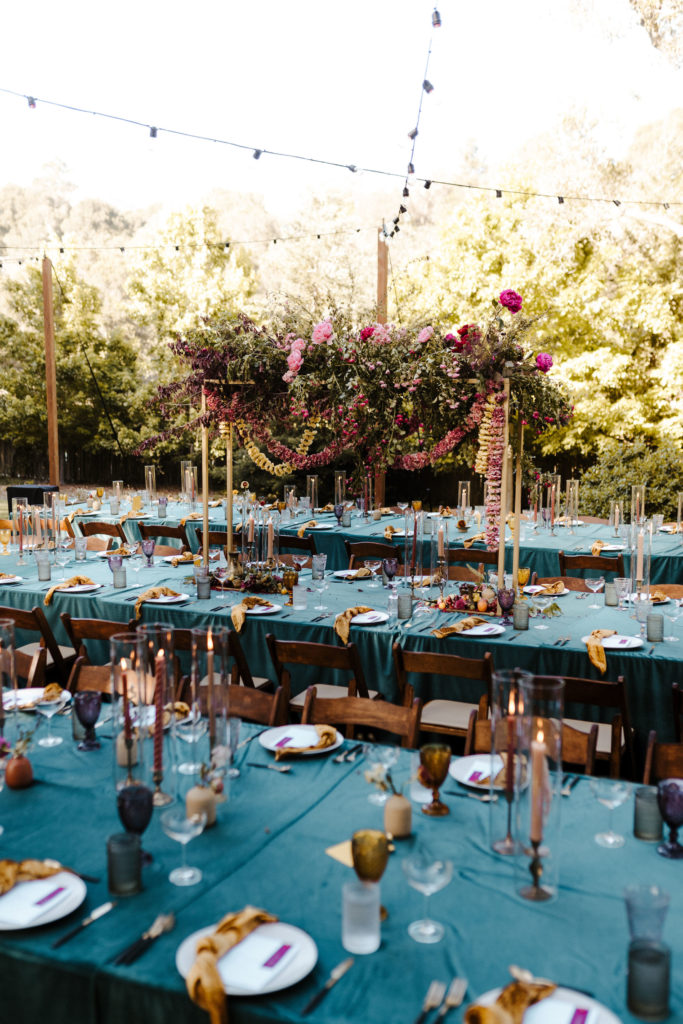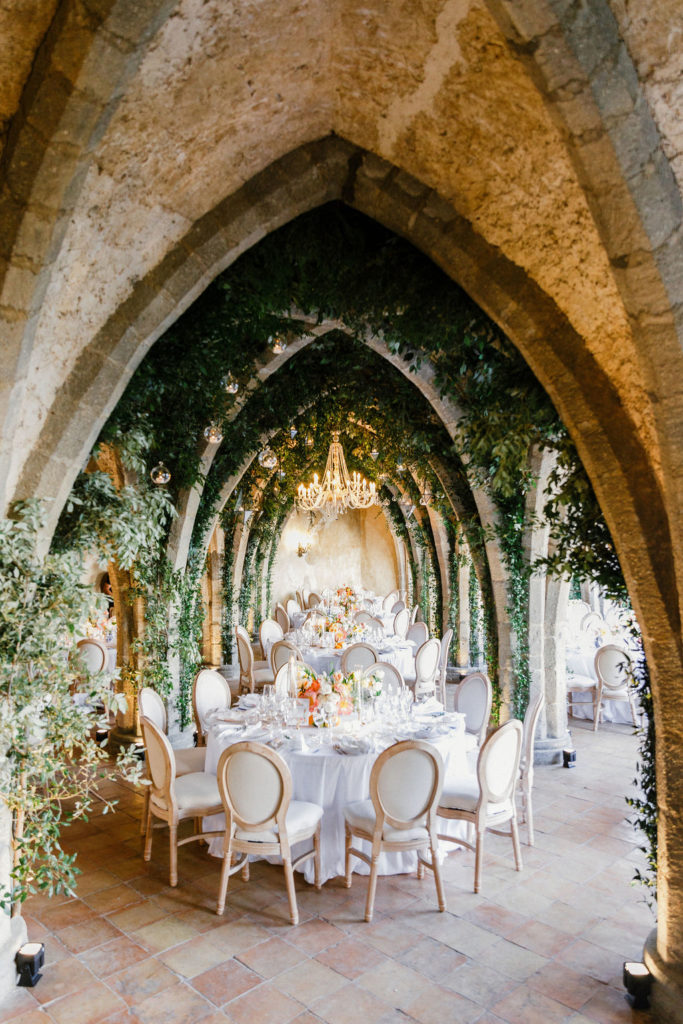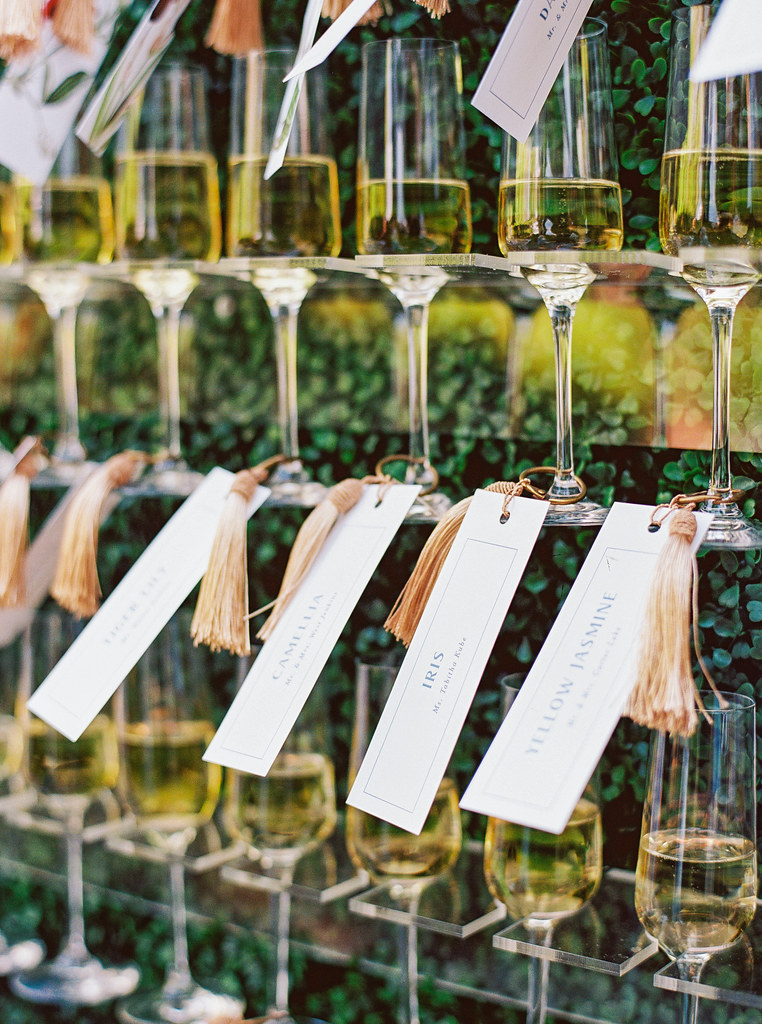We’ve all heard the cautionary tales of the intricacies involved in seating plans and warnings of organising this well in advance, but what is the most straightforward method to have your guests seated and happy? Emily Money-Coutts advises.
Top Table

First thing is first, the top table takes pride of place in the room and should be the focal point. The traditional concept for this was a long rectangular table backing onto a wall, with the wedding party looking out onto the rest of the reception.This traditional style included eight main people, the bride and groom, both sets of parents and the best man and maid of honour. The bride and groom are seated in the centre (bride on the left with her groom to her right), with the most common variations listed in the graphs at the end of this article. The layout of seating is entirely up to you as a couple, some choose to allocate parents their own tables so they can sit with their guests and are free to chat, while others prefer the closeness of having their parents by their side. Either way, the normal practice for weddings is to try to alternate gender when seating guests. You don’t have to feel restricted to a one-sided top table facing the reception, some couples opt for a round table situated in the midst of the room or alternatively, a long rectangular table also in the centre of the room which can seat guests either side if you wish to include more guests. As another option, some newlyweds decide on a sweetheart table which is a table just for the two of you. When navigating the politics of divorced parents and stepparents, this can prove a tricky situation. If your parents don’t get along, try not to stress and remember they are seated at opposite sides of the table so likely won’t have a whole lot of interaction.You also have the option of giving each parent their own dedicated table as mentioned earlier, but this of course means they won’t be seated with you and could result in four separate parent tables if both sets are divorced. Family tables should include any siblings not part of the wedding party, grandparents and the officiant, along with any other close family members. Depending on the size of your wedding party, you may decide to include all your bridesmaids and groomsmen, and space-allowing all their partners too. If you have one sister or brother who is not part of the wedding party, prioritise them for a spot so they are not left out.
Odd Numbers
Avoid getting stuck on the idea of having perfect tables of 10, some tables may require a little more, some a little less. Ask your venue if there are different options available, and if not, make sure you don’t overcrowd tables where guests will struggle to fit! Find out from the venue where tables will be placed and exactly how many per table before you get stuck into any decisions.
Types Of Tables
 Kayla Esparza
Kayla EsparzaThere are two main types of tables, the most commonly seen round tables which can seat between eight and 12 guests, or long rectangular tables which are known to seat up to 50 guests. If you opt for the long rectangular tables, incorporate the most important people that would make up the top table in the seats closest to and opposite you. If opting for round tables, fill the tables nearest to the top table with your closest family and friends.
Make A Spreadsheet
Create a list of all your guests and try to categorise them by your relationship whether that be family, wedding party, bride’s friends, groom’s friends, shared friends or family friends – it will make it easier to assign seating when you are ready to do so. This way you can also cross check that every person invited has been included in the table plan and nobody has been forgotten.
Find A Balance
 Jana Williams Photography
Jana Williams PhotographyIf you are inviting couples, they are most often seated together so if you are including singles at this table, try to avoid placing all couples with one single person. It’s also not the best idea to create a dedicated singles table, this can feel like forced matchmaking. Instead, try to find a balance between singles and couples and of course, it is a nice idea to seat those who you think may hit it off near one another. The idea of alternating genders is also a good idea as it sparks a good mix of conversation and often avoids rowdy same-sex tables. And the golden rule is to avoid placing somebody at a table where they know nobody, it doesn’t matter how good they are at socialising normally, it always helps to have a friendly face. When laying out your seating plan, try to take into consideration ages and interests. While it is great getting to know new people, make sure they will have something in common with each other. Similarly, weddings are a great opportunity for old friends to catch up so why not combine your school friends with his, this way guests get to know new people whilst also catching up with old friends!
Avoid Arguments
If there are friends or family members who you know don’t get along, avoid any risk of arguments by placing them at tables on opposite ends of the room. Consider any tensions before you assign table placements and by adding space between these people, you can certainly put your own mind at ease on the day and they will most likely appreciate the distance from one another! Trust your instincts, if you worry two people’s personalities may clash although they have never met, go with your gut and seat them separately. Similarly, if there are two or three friends who you have pegged to be the rowdy ones, don’t make the mistake of combining them all at a table together in the corner as they’re more likely to encourage one another. It’s a recipe for disaster.
Access All Areas
 Jana Williams Photography
Jana Williams PhotographyTake some time to consider those who may need access to the door, such as elderly people or pregnant ladies nipping to the toilets. If you are inviting children, ensure they are within sight of their parents and know how to reach them if necessary. Make sure you also allow enough space for anybody less-mobile such as wheelchairs, crutches or walking frames. You should plan for ample space for guests and waiters to pass between all tables regardless. Your venue should be able to advise on comfortable distances.
Let's Get Visual
Some people find it easier to visualise the chart if they have the room plan recreated and can place guests’ names on coloured post-its (may I recommend one colour for women and another for men to make it easier for alternating seating). Whether you draw it out yourself or use one of the very useful websites which allow you to move your guests around, this will ensure you’re on top of things from early on. In terms of websites, Allseated.com is a great option and free too! It allows you to design the entire room to your specs and you can mix and match table shapes and sizes to your heart's content! Websites are undoubtedly a better option as post-its can fall off or move around. Having a digital version allows you to update it and send it on to your venue at ease.
Expect The Unexpected

Last-minute changes are inevitable so take it in your stride and don’t lose your cool. Whether it be somebody who had originally declined your invitation but can magically make it last minute, or one of your school friends bringing along an un-invited plus one, the wedding Co-ordinator at your venue will find the space on the day. It’s also not unusual for guests to pull out last minute, from sick children to family emergencies, it happens so don’t sweat it and enjoy your wedding!

